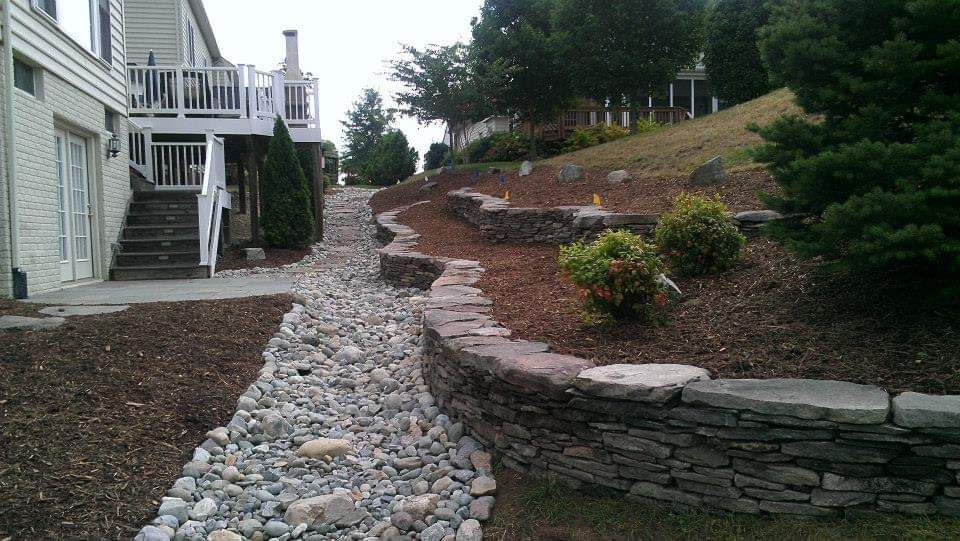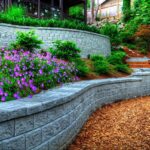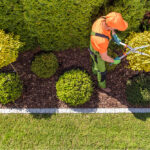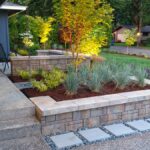Retaining walls serve a critical role in stabilising slopes, managing soil erosion, and enhancing the aesthetics of outdoor spaces on your residential & commercial properties.
However, to ensure their longevity and effectiveness, one crucial aspect that should never be overlooked is proper drainage.
With the weather becoming more unpredictable this has never been more important.
In this new article, we will explore the significance of incorporating adequate drainage systems in retaining walls to prevent water damage and maintain their structural integrity.
If you would like to learn more about retaining walls in Minnesota, MN please click the link provided.
Understanding The Need For Drainage Systems
Retaining walls often encounter water accumulation due to rainfall, irrigation, or natural groundwater.
Without proper drainage systems, water can build up behind the wall, exerting pressure on the structure.
Over time, this pressure can compromise the stability of the wall, leading to cracks, bulges, or even failure.
Effective drainage systems help alleviate this pressure, redirecting water away from the wall and mitigating potential damage.
Allowing your retaining wall to last longer & remain strong.
Prevention Of Soil Saturation
Excessive water accumulation can saturate the soil retained by the wall, leading to increased weight and reduced soil stability.
This saturation can exert additional pressure on the wall, affecting its structural integrity.
By incorporating drainage provisions, excess water is efficiently drained, preventing soil saturation and maintaining the desired load-bearing capacity of the retained soil.
Preservation Of The Retaining Walls Aesthetics
Waterlogged retaining walls can develop unsightly stains, mold, or efflorescence, detracting from their visual appeal.
By implementing efficient drainage systems, water is prevented from seeping through the wall’s surface, preserving its appearance and reducing the need for frequent maintenance or cleaning.
Proper drainage contributes to the long-term aesthetic value of the retaining wall, keeping it looking beautiful and well-maintained.
What Are The Steps Put In Place For Retaining Wall Drainage Solutions
Planning and Design:
Begin by assessing the site conditions and determining the appropriate drainage system for the specific retaining wall project.
Consider factors such as the wall height, soil type, water sources, and local climate. Plan the layout of the drainage system, including the location of weep holes, pipes, and other drainage components.
Excavation:
Excavate the area behind the retaining wall where the drainage system will be installed. This typically involves digging a trench along the backside of the wall.
The depth and width of the trench will depend on the specific requirements of the drainage system and the wall’s design.
Install Filter Fabric:
Before placing any drainage materials, line the excavated trench with a geotextile filter fabric.
This fabric prevents fine soil particles from clogging the drainage system while allowing water to pass through.
Install Drainage Pipe:
Place a perforated drainage pipe, often made of PVC or corrugated plastic, at the base of the trench.
The pipe should have evenly spaced perforations or slots to facilitate water collection.
Position the pipe with the perforations facing downwards to prevent clogging.
Connect and Slope the Drainage Pipe:
Connect the drainage pipe sections, ensuring a secure and watertight connection. Properly slope the pipe to ensure that water naturally flows away from the wall.
A minimum slope of 1% is generally recommended, but consult local regulations or engineering guidelines for specific requirements.
Backfill with Drainage Material:
Backfill the trench and cover the drainage pipe with a layer of clean, coarse aggregate or drainage stone.
This material helps facilitate water flow while preventing soil intrusion into the drainage system. Carefully compact the backfill to provide stability and prevent settling.
Install Weep Holes:
Create weep holes along the retaining wall at regular intervals. Weep holes are small openings through the wall that allow water to escape from behind the structure.
These holes can be made using preformed weep hole inserts or by leaving gaps between the wall units during construction.
Backfill with Soil:
Once the drainage system is in place, backfill the remaining space behind the retaining wall with suitable soil or backfill material.
Compact the soil in layers to ensure proper compaction and minimize settlement.
Surface Drainage and Grading:
Pay attention to the surface drainage and grading of the surrounding area.
Ensure that the ground is sloped away from the retaining wall to direct water flow away from the structure.
Proper surface drainage helps prevent excess water from reaching the wall.
Why Choose Green Grounds Landscaping In Minnesota, MN?
Choose Green Grounds Landscaping, LLC, for your next project, and experience the difference that comes with working with a team that puts customer satisfaction at the forefront.









